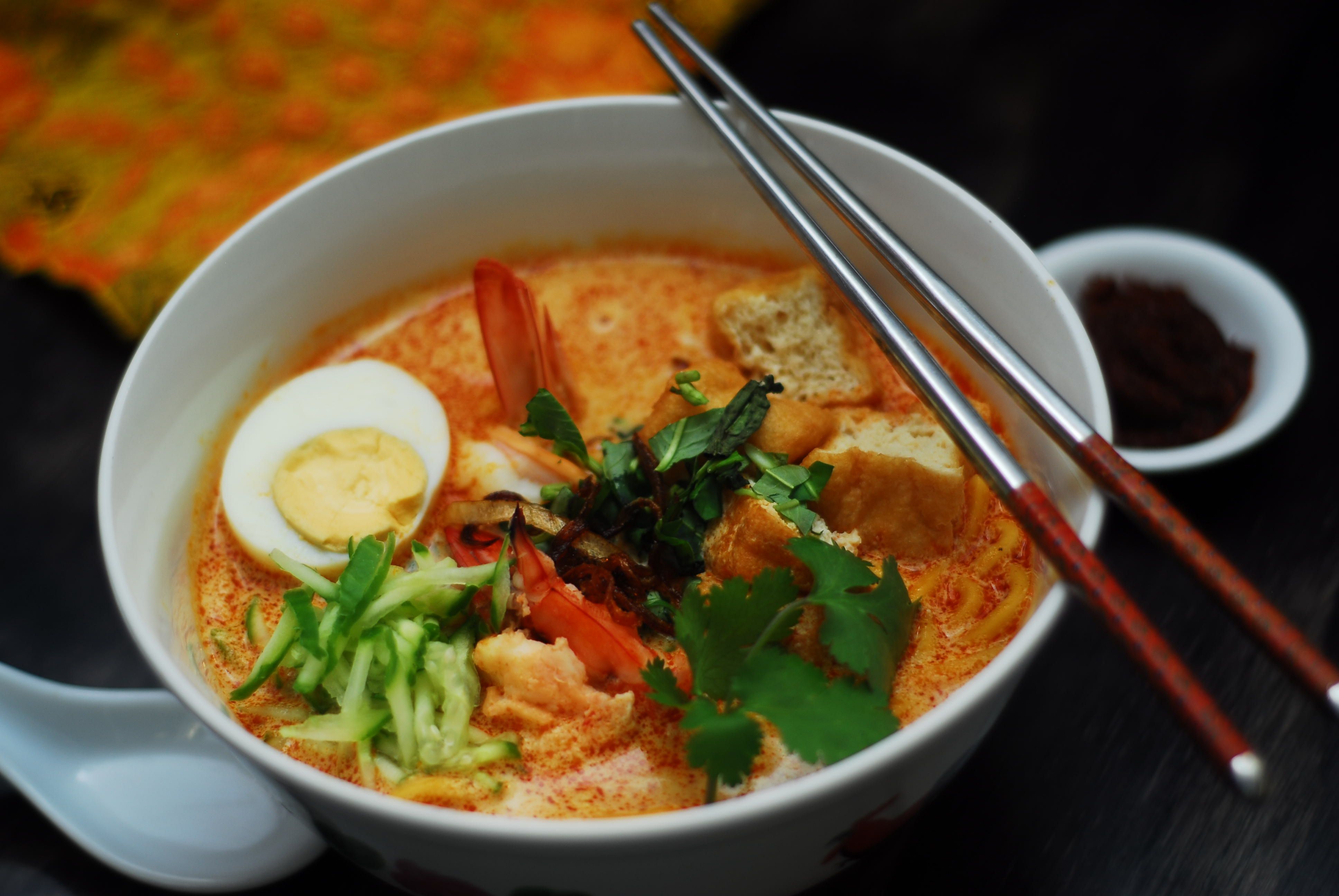Recipe Description
Roast chicken is one of the most basic dishes that many families would regularly serve at the dinner table. For many Asian families, however, roast chicken are usually store-bought because either they don’t have an oven, or the oven is reserved only for baking cakes, cookies and other confectioneries. My wife’s mom still does not allow roasting to be done in her oven because she doesn’t want to clean the splatters and she feels it will affect the taste of her baked products.
For many years when I roasted a whole chicken, I followed the recipes of the past that called for dried mixed herb. I had no idea what herbs were in the mix but it tasted fine because I didn’t know any better.
Then I discovered the wonderful world of fresh herbs that took my roast chicken to a whole other level. Every time I think of parsley, sage, rosemary and thyme, these herbs not just evoke the song Scarborough Fair, but also that timeless tradition of infusing the bounty of the land into everyday dishes. Once you’ve used fresh herbs, you’ll never go back to dried because you can taste the superior flavour of fresh.
The first time I roasted a chicken with fresh herbs was for my dad on Father’s Day. I bought a free-range chicken of about 2.5 kilograms because I had thought that if I was going to go traditional, I might as well go all the way. I was also curious to taste how a roast chicken would be like in the ancient days.
The result was phenomenal. The chicken tasted very pure and intense and was complemented with the robust herbs. I had thought that the flesh would be tough but it turned out perfectly moist and tender.
Thereafter, I would get a free-range chicken for roasting whenever possible. I would ask for a chicken of more than 2 kilograms, and the chicken seller would ask what I need it for. Then she would give me a weird look and would say it was a waste to roast free-range chicken. But I knew better because the flavour cannot be matched with regular battery chicken.
One of the tricks of keeping the chicken tender, especially the breast, is to make sure that the meat retains its moisture. Inserting butter between the skin and the breast allows the fat to get absorbed into the lean meat, adding flavour. A drizzle of extra virgin olive oil also adds another layer of flavour and moisture retention.
Most importantly, the chicken has to be lifted on a rack away from the pan so that the heat can reach all around the bird without the need to flip it over. Then fill the pan with water, white wine, beer or cider. This liquid creates steam that keeps the chicken moist throughout the roasting, and also drippings that will be used for gravy.
I do not usually add root vegetables such as carrots and potatoes into the roasting pan because they tend to absorb so much of the drippings that I couldn’t make gravy. If I want roast vegetables, I would usually put them in a separate pan on the bottom rack, or roast them after I had remove the chicken from the oven to rest.
You can also use this recipe to marinade chicken chops for grilling. I usually blend all the herbs together with peeled garlic, olive oil, salt and pepper into a paste, then smother six chicken chops with the paste for about an hour. You can broil them over the barbecue, roast in the oven, or just grill over the stove top. Chicken chops are boneless, so they are done in 20 minutes.

Recipe Ingredient
- 1 whole chicken, about 2 kg
- 50g unsalted butter
- 8 cloves garlic
- 5g fresh parsley
- 5g fresh sage
- 5g fresh rosemary
- 5g fresh thyme
- 1 tsp salt
- 2 tsp black pepper + extra freshly ground over chicken
- 2 tbsp extra virgin olive oil
- 3 cups water, white wine, beer or cider
- 1 tsp cornstarch + 1 tbsp water
Instructions
- Clean and dry whole chicken, trim off head and neck, legs and excess fat.
- With the breast facing up, insert your hands under the chicken skin at the neck cavity and ease the skin away from the meat, leaving a huge pocket at both sides of the breasts.
- Cut butter into thin slices and insert into the pockets between the chicken skin and the breast meat. Pluck off about 12 whole sage leaves and arrange into the pockets with the butter. Sprinkle the inside and outside with salt and pepper.
- Mince all the fresh herbs and stuff into the bird cavity. Lightly smash the whole unpeeled garlic cloves and stuff into the bird. Cut a short length of kitchen twine about 20 centimetres and tie up the drumsticks to keep the stuffing tucked inside the bird. Drizzle with olive oil and rub all over the entire bird, then grind extra pepper to cover the chicken.
- Place chicken on a rack in a roasting pan and fill the pan with 3 cups of fluid of your choice. Roast in a preheated oven at 200°C for one hour until fully cooked. To check for doneness, prick the thigh joint and it's done if the juice runs clear. Allow to rest for at least 10 minutes before carving.
- In the meantime, pour the pan drippings into a saucepan and bring to a boil. Reduce the gravy for about 5 minutes and add cornstarch slurry to thicken. Pour gravy over chicken and serve immediately.










